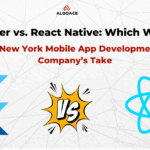
In recent years, the landscape of fitness has transformed significantly, moving beyond the confines of traditional gyms and exercise classes. The emergence of immersive virtual fitness experiences has fundamentally changed the way individuals engage with physical health. With the increasing popularity of custom mobile app development, fitness enthusiasts now have access to customized and captivating workout programs that seamlessly integrate technology and innovation. This shift creates remarkable opportunities for software development companies to design state-of-the-art fitness applications that enhance the user experience.
The Rise of Immersive Virtual Fitness
Immersive virtual fitness encompasses the utilization of technologies such as augmented reality (AR), virtual reality (VR), and mixed reality (MR) to establish an engaging and interactive fitness atmosphere. In contrast to standard workout applications, these platforms immerse users in virtual environments where they can traverse picturesque trails, participate in virtual cycling competitions, or engage in yoga sessions within a serene, simulated setting.
The Role of Mobile Apps in Virtual Fitness
Mobile applications are fundamental to the immersive virtual fitness experience. By utilizing sophisticated sensors, motion tracking, and real-time data analysis, these applications provide users with a highly interactive platform. The adaptability and scalability of custom mobile app development enable fitness brands to meet a wide range of user preferences, accommodating everything from home workouts to outdoor excursions. Similarly, just as a custom logo design reflects a brand’s identity, these tailored fitness apps represent a brand’s unique approach to health and wellness.
Why Custom Mobile App Development Is Essential for Virtual Fitness
Custom mobile app development plays a crucial role in virtual fitness by facilitating the design of tailored, immersive experiences that align with personal fitness objectives. The incorporation of cutting-edge technologies such as augmented reality (AR), virtual reality (VR), and artificial intelligence (AI) significantly boosts user engagement and transforms the approach to maintaining an active lifestyle.
Personalization at Scale
A primary advantage of custom mobile app development lies in its capacity to provide exceptionally personalized experiences. Virtual fitness applications can adjust to a user’s specific fitness level, aspirations, and preferences through the integration of AI-driven recommendation systems.
Integration of Advanced Technologies
To create immersive fitness experiences, software development companies should incorporate cutting-edge technologies, including:
- Augmented Reality (AR) and Virtual Reality (VR): To develop interactive and captivating environments.
- Artificial Intelligence (AI) and Machine Learning: To assess user performance and provide immediate feedback.
- Internet of Things (IoT) Devices: To connect wearables such as smartwatches and heart rate monitors.
Enhanced User Engagement
Custom fitness applications stand apart from standard offerings by integrating gamified components, fostering social connections, and presenting engaging challenges. Such attributes greatly enhance user retention and overall satisfaction.
Features to Include in Virtual Fitness Apps
To develop a thriving virtual fitness application, it is essential to include functionalities that elevate user engagement, offer real-time feedback, and create tailored workout experiences. By incorporating advanced AR/VR workouts and ensuring smooth integration with wearable devices, these features facilitate a dynamic and impactful fitness experience.
1. Immersive Workouts
Custom applications have the capability to integrate augmented reality (AR) and virtual reality (VR) workouts, enabling users to experience activities such as cycling through a virtual Tour de France or jogging in a simulated forest environment. This functionality enhances the appeal of exercising, making it more engaging and less repetitive.
2. Real-Time Feedback and Analytics
The incorporation of motion-tracking technology allows these applications to deliver immediate feedback regarding users’ form, posture, and overall performance. Users can monitor various metrics, including calories burned, heart rate, and the duration of their workouts.
3. Social and Community Features
Furthermore, custom applications can facilitate virtual group workouts, maintain leaderboards, and provide options for social sharing. These features cultivate a sense of community, encouraging users to remain committed to their fitness routines.
4. Gamification
Incorporating elements such as badges, rewards, and challenges introduces a gamified aspect to the fitness experience, motivating users to strive for personal improvement.
5. Wearable Integration
Additionally, seamless integration with Internet of Things (IoT) devices enables users to synchronize their fitness data, thereby creating a holistic health profile.
6. Adaptive Workouts
AI-driven adaptive workouts can dynamically modify the intensity and duration of exercises based on individual user progress and specific fitness goals.
Challenges in Developing Virtual Fitness Apps
Developing virtual fitness applications presents distinct challenges, including the need to manage substantial development expenses associated with AR/VR integration while ensuring compatibility across various devices. Furthermore, it is essential to address concerns related to data privacy and security to foster user trust.
High Development Costs
Creating engaging experiences utilizing AR/VR technologies necessitates considerable investment in design, testing, and implementation. Software development companies must find a balance between delivering high-quality products and maintaining affordability.
Hardware Compatibility
Achieving seamless functionality across a range of devices, such as smartphones, tablets, and wearables, poses a significant challenge.
Data Privacy and Security
Given that fitness applications handle sensitive user information, prioritizing security is imperative. Developers are required to adhere to regulations such as GDPR to protect user data effectively.
How Software Development Companies Can Lead the Way
Software development companies are essential in crafting engaging virtual fitness experiences by utilizing advanced technologies such as augmented reality (AR), virtual reality (VR), and artificial intelligence (AI). By emphasizing innovation, partnering with fitness professionals, and adopting a user-focused design approach, these companies can develop effective and captivating solutions that transform contemporary fitness practices.
Collaboration with Fitness Brands
To develop successful virtual fitness applications, it is imperative for software development companies to work closely with fitness professionals, trainers, and wellness brands. This collaboration guarantees that the application adheres to industry standards and fulfills user expectations.
Focus on User-Centric Design
Focusing on a user-friendly interface (UI) and a smooth user experience (UX) is vital. Custom applications should be designed for easy navigation, accommodating even those who are not technologically inclined.
Utilizing Agile Development
Employing agile methodologies enables developers to construct, test, and enhance features through iterative processes, ensuring that the final product meets user requirements effectively.
Benefits of Immersive Virtual Fitness Apps
Immersive virtual fitness applications are transforming the approach individuals take towards their workouts by integrating cutting-edge technology with captivating, interactive experiences. These applications significantly improve motivation, accessibility, and personalization, resulting in more regular and effective fitness journeys.
1. Accessibility
Virtual fitness applications effectively bring the gym experience into the user’s home, thereby making fitness attainable for individuals with hectic schedules or mobility challenges.
2. Motivation and Consistency
The incorporation of gamification and social elements within these applications fosters user motivation and consistency in their exercise routines.
3. Global Reach
Custom mobile applications allow fitness brands to broaden their global reach, appealing to a varied audience.
4. Improved Health Outcomes
With functionalities such as real-time feedback and performance monitoring, users can more effectively attain their fitness objectives.
Real-World Examples of Immersive Virtual Fitness
Immersive virtual fitness exemplifies the transformative impact of technology on workout engagement. Prominent applications such as Peloton, Supernatural, and Zwift illustrate the effectiveness of tailored mobile app development in providing interactive, personalized, and motivating fitness journeys.
Peloton
Peloton has established itself as a benchmark in virtual fitness by integrating live-streamed classes, competitive leaderboards, and engaging cycling experiences.
Supernatural
This VR-centric fitness application enables users to engage in cardio and strength training within breathtaking virtual settings.
Zwift
Zwift presents an interactive environment for cyclists and runners to train virtually while competing against users globally.
The Future of Virtual Fitness
The increasing demand for immersive virtual fitness applications is anticipated to rise as AR and VR technologies gain wider acceptance. This trend offers fitness brands, conversion rate optimization company, and software development companies a unique opportunity to innovate and tap into a flourishing market. The potential for advancements, from AI-enhanced virtual trainers to analytics integrated with wearables, is boundless through custom mobile app development.
Conclusion
As the intersection of fitness and technology deepens, custom mobile app development is revolutionizing how individuals maintain their health and activity levels. By harnessing cutting-edge technologies such as AR, VR, and AI, immersive virtual fitness applications deliver engaging and tailored workout experiences. For software development companies, this burgeoning trend presents significant opportunities to create solutions that not only fulfill user needs but also transform the fitness landscape.
For fitness brands seeking to enhance their digital footprint or technology companies aspiring to spearhead the next wave of innovation, the present moment is ideal for investing in immersive virtual fitness experiences.





0 Comments